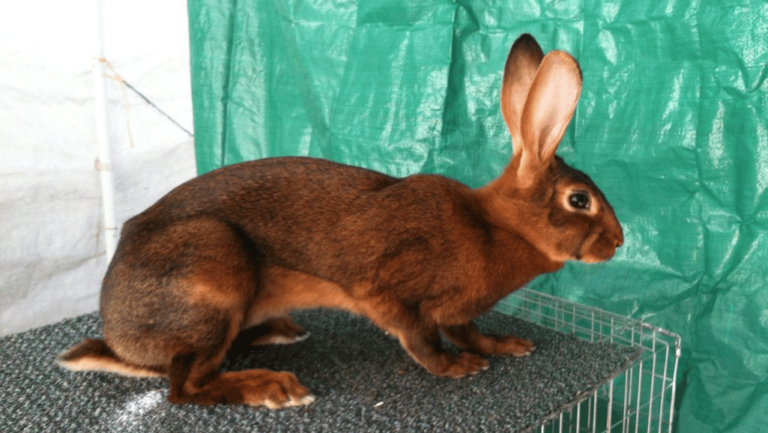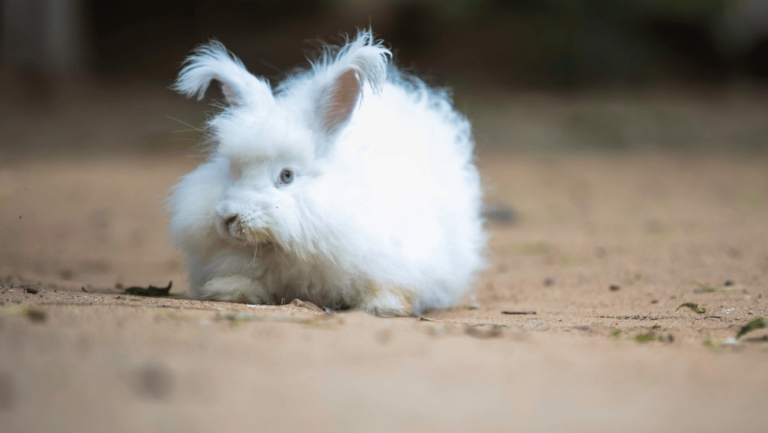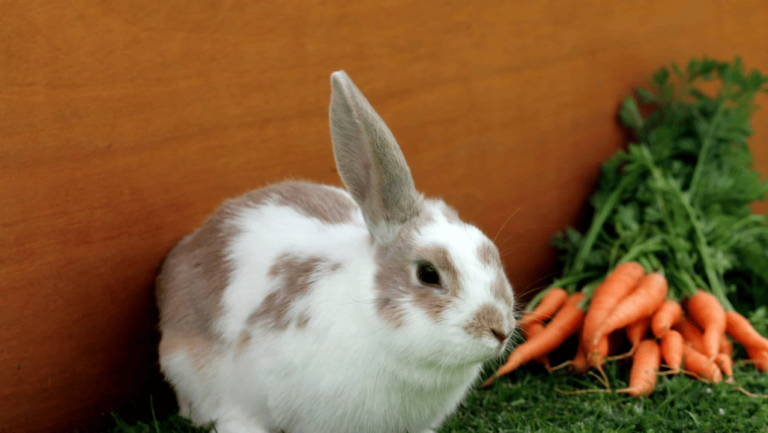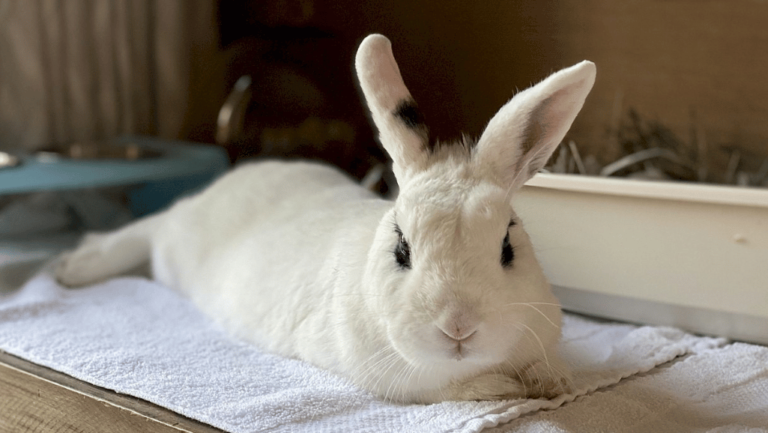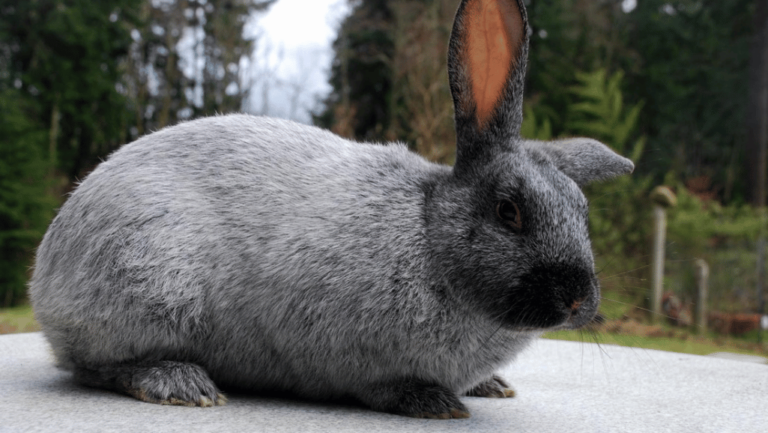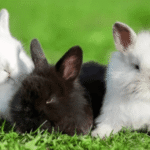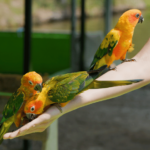Cute Angora rabbits are an old domesticated breed that began in Turkey and found fans in France by 1723. They reached the United States around 1840 and became beloved for their silky, fast-growing fur.
These animals produce abundant fiber—some can yield up to four pounds a year—because of a recessive gene that drives hair growth. Adults often weigh 4–12 pounds and typically live about 5–12 years.
Gentle and intelligent, this breed makes a calm pet for people who can give steady time to grooming and handling. Their long fur and fluff need routine brushing and careful care to stay healthy.
This beginner’s guide previews traits, breed types, grooming, feeding, housing, health watch, training, and basic wool handling. Read on to learn practical steps and checklists so these pets can thrive in U.S. homes.
Key Takeaways
- Angora rabbits have a long history and unique fast-growing fur that needs regular care.
- Adults weigh 4–12 pounds and live roughly 5–12 years, with larger types often living longer.
- Owners must commit daily time for brushing, safe handling, and monitoring health.
- Different angora breeds vary in maintenance, face, ear, and weight traits.
- With consistent care, these pets reward owners with calm, affectionate companionship.
Why Angora Rabbits Are Adored: Traits, History, and What Beginners Should Know
Heritage and timeline: These animals likely began in Turkey, were recorded in France by 1723, and arrived in the United States around 1840. Demand for wool rose sharply during WWII, which cemented their role among fiber animals.
Defining trait: A recessive gene makes hair grow roughly one inch per month. That fast growth gives the soft coat breeders prize, but it also creates a grooming need that beginners must plan for.
- Recognized breeds: ARBA lists English, French, Satin, and Giant — each shows small care differences but shares the same fiber biology.
- Size and lifespan: Adults range about 4–12 pounds and often live 5–12 years; larger individuals may produce more wool and live longer.
- Starter realities: These animals are calm and social, yet demand more time for brushing and coat checks than short-haired pets.
- Practical routine: Think daily feeding and inspection, weekly grooming, and occasional shearing to prevent mats and discomfort.
Before choosing a breed, contact an American Rabbit Breeders Association chapter or a rabbit-friendly veterinarian for local advice. Clear routines and realistic expectations help both owner and pet thrive over the years.
Recognizing Angora Rabbit Breeds and Their Fluffy Differences
Understanding breed differences helps you match grooming time, fiber goals, and living space to the right animal.
English Angora — Compact body (about 6–7 pounds) with full facial furnishings and tassel-tipped ears. Their dense, silky fur mats quickly without frequent brushing and excels for soft fiber.
French Angora — Larger at roughly 8–10 pounds and notable for a clean face, ears, and front legs. The smoother coat is easier to maintain while still producing usable wool.
Satin Angora — Around 7–8 pounds with a lustrous, silky texture prized for specialty fiber. Expect moderate grooming and a lower overall wool yield than larger types.
Giant Angora — Big bodies (10–12+ pounds) and high wool output per shearing. These heavy producers need regular clipping and space to move comfortably.
- German Angora: About 10–11 pounds, sheared roughly every 90 days and guided by IAGARB standards rather than ARBA.
- Lionhead: A look-alike weighing ~4 pounds; not a true angora rabbit but offers a mane with much lighter grooming needs.
Compare face, ears, body size in pounds, and coat texture before picking a breed. That choice shapes weekly care and long-term satisfaction.
Setting Up a Healthy Habitat in the United States
A well-ventilated, shaded enclosure is the foundation of good care for long-fur companions in the U.S.
Prioritize indoor housing to lower parasite risk and steady temperatures. Reserve outdoor hutches only if they are predator-proof, shaded all day, and elevated to stay dry.
Keep ambient temperatures near 50–75°F and promote airflow to avoid heat stress. Dense coat and thick fur trap warmth, so watch for panting or lethargy during warm spells.
“Shade, secure locks, and daily checks make the biggest difference in health and comfort.”
- Provide roomy flooring, clean bedding, and a corner litter box placed away from food and water.
- Anchor water bottles to prevent spills that can soak the coat and cause skin issues.
- Offer hideaways, chew-safe enrichment, and supervised exercise in a rabbit-proofed area.
Manage humidity and drafts: a draft-free but ventilated room keeps the coat dry and lowers infection risk. Choose ramps, pans, and toys sized for the animal’s pounds so ears and paws stay protected.
Grooming Needs for Long Fur and Silky Coats
Long coats demand steady attention; a simple weekly plan keeps mats and skin problems away.
Brushing routine: Brush several times a week to remove loose hair and detangle fur. Short sessions work best — break grooming into 5–10 minute segments if needed. This reduces hair ingestion and helps prevent digestive blockages.
Shearing and coat resets
Coats grow roughly one inch per month, so plan shearing every three to four months. Thin skin tears easily, so use blunt-nose scissors or seek a rabbit-savvy groomer for safe clipping.
Nails, ears, and eyes
Trim nails every 4–6 weeks to avoid snagging and posture issues. Clean ears with a vet-approved cleaner and keep fur around the ear opening tidy.
Trim facial fur lightly around the eyes to prevent irritation and watch for discharge that may signal infection.
Time, tools, and setup
Stock a small box with a slicker brush, wide-tooth comb, blunt scissors, styptic powder, and treats. Handle the body with one hand under the chest and one under the hindquarters to protect the spine.
“Short, consistent sessions and the right tools make grooming less stressful for both owners and pets.”
- Weekly brushing controls loose hair and matting.
- Shear every 3–4 months for comfort and skin health.
- Use appropriate tools or hire a specialist to avoid nicks.
- Keep a grooming box ready to save time during sessions.
For breed-specific tips on satin-type coats and tool choices, see the Satin-type care guide.
What to Feed an Angora Rabbit for Digestive Health and Shine
Good feeding supports digestion, a lustrous coat, and steady energy. Start every day with hay as the core of the diet. Make hay the starring item at every meal to prevent wool block and keep gut motility steady.
Hay first
Serve hay twice a day in piles at least the size of the animal’s body. Coarse fiber reduces GI stasis and lowers the chance of wool block.
Greens and vegetables
Offer about 1 cup of dark leafy greens per 2 pounds of body weight each day. Rotate parsley, cilantro, kale, arugula, and carrot tops. Give zucchini, broccoli, and bell pepper in smaller amounts and watch stool quality.
Pellets, water, and treats
Feed fortified pellets at roughly 1/4 cup per 4–5 pounds daily. Use clean water bottles secured to the enclosure to avoid contamination. Limit sugary treats; choose fiber-rich rewards and save fruit for rare training moments.
Track appetite, drinking, and droppings daily to spot early signs of digestive trouble.
- Keep hay racks away from the litter box to protect the nose and coat.
- Provide chew toys made of hay to help wear teeth naturally.
- Maintain a simple feeding journal to monitor weight and preferences.
cute angora rabbit Health Watch: Common Issues and Early Signs
Quick, consistent daily checks reveal early signs of trouble beneath a dense coat. Make a short habit of inspecting coat, eyes, and behavior each day to catch problems early.
GI stasis and wool block
GI stasis shows as decreased appetite, fewer or no stools, and marked lethargy. Treat it as an emergency: seek veterinary care fast since fluids and medications improve outcomes for angora rabbits.
Wool block can follow heavy hair ingestion. Regular brushing and abundant hay cut risk; suspected obstruction needs immediate vet attention and sometimes surgery.
Flystrike, skin infections, and parasites
Warm months and outdoor settings raise flystrike risk. Part the fur and inspect the body for eggs or maggots daily. Prompt shaving and veterinary care can save lives.
Watch for wool mites, scabs, or intense itching. Treat the animal with prescribed antiparasitics and disinfect the environment to stop reinfestation.
Dental, ears, and eyes
Teeth grow continuously. Provide constant hay and chew toys to wear teeth down naturally. Overgrowth can cut cheeks or cause abscesses and may require sedation, trimming, and imaging.
Keep eyes free of stray hair and trim facial fur if it causes tearing or irritation. Clean ears gently with vet-approved products if wax or odor appears.
“A short daily log of appetite, stools, grooming, and behavior helps spot small changes before they become serious.”
- Check for reduced eating or stool — treat GI stasis as urgent.
- Brush to lower wool block and inspect for flystrike.
- Provide hay and chew toys to protect teeth.
- Support chest and hindquarters during handling to avoid spinal injury and weak legs.
Temperament, Handling, and Training for Happy Pets
Temperament shapes daily routines, so learn how calm, social companions signal needs and trust.
Litter habits
Teach them to use a litter box by placing the box where they already go. Anchor hay beside the box to encourage visits and keep the box clean each day.
Use litter that is dust-free and absorbent to reduce odors and make the area inviting. If accidents happen, move the box to the spot where they prefer to go.
Body language and safe handling
Watch ears, posture, and movement to read mood. A tucked body or flattened ears means give space.
Support the chest and hindquarters when lifting. Never grab by the scruff; sudden struggling can injure the spine or legs.
Play and enrichment
Offer short, predictable social sessions with tunnels, chew toys, and foraging mats. Let the animal approach people; many show cat-like independence and bond faster when contact is invited.
Teach simple cues with treats and praise in brief sessions. Provide multiple boxes in larger areas to prevent accidents during free-roam time.
- Place the box where elimination naturally occurs.
- Use gentle, low lifts and always support the body.
- Rotate toys weekly to keep play stimulating.
- Supervise children and teach calm handling.
“Short, consistent training and calm handling build trust faster than force.”
Angora Wool and Fiber Basics for Rabbit Owners
Turning a rabbit’s soft coat into usable yarn starts with gentle, clean collection. Gather fiber during routine grooming or at scheduled shearing and sort it by length and texture. Clean, well-sorted wool fetches better prices and spins more predictably.
Collecting and using fiber
Work in a tidy space and remove debris before you bag fiber. Store fleece in breathable bags to protect the silky texture and prevent odors.
- Sell or donate: Raw angora wool often sells for about $5–$10+ per ounce. Local yarn shops and spinning guilds welcome clean donations.
- Spin or felt: Process fiber into yarn or felted goods. Handspun yarn adds value for makers and crafters.
- Project choice: Satin-type wool gives a shiny yarn; English-type wool makes a soft, haloed yarn ideal for accessories.
Shedding vs. shearing
Know your breed. Some coats shed seasonally and release fiber with gentle grooming. Others need full shearing every three to four months for comfort and steady yield.
Largest individuals can produce up to four pounds of fiber per year when managed well.
German Angoras often require shearing about every 90 days and are popular with keepers who prioritize fiber output. Track yields and plan shearing dates to match craft schedules and market demand.
Handle each animal calmly during collection, take frequent breaks, and clean tools between sessions to preserve fiber quality and keep animals healthy. Build community through local links to spinners and shops to learn, sell, or donate fiber.
Conclusion
Consistent small steps—short grooming sessions, regular shearing, and daily checks—make living with long fur pets manageable.
Set a simple weekly plan: brush several times, schedule a shearing every 3–4 months, and keep hay as the diet base to prevent GI stasis. Watch eyes, nose, and coat every day and encourage them to use litter with gentle repetition.
Match the breed to your time and fiber goals; different breeds show unique texture and fluff and may need more frequent clipping. Protect skin around the face and ear when trimming so the animal can see and breathe comfortably.
Rotate toys for enrichment, learn body language, and use local links to find groomers and vets. With steady grooming, good food, and calm handling, angora rabbit owners report quiet, cat-like companionship and a healthy, soft coat that rewards care.







